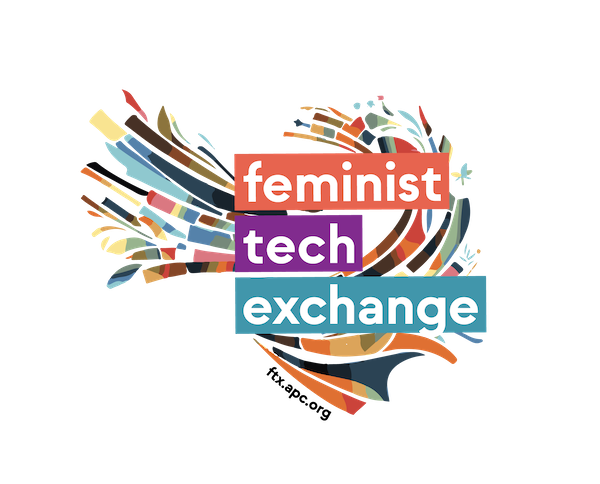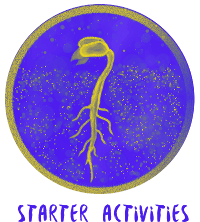Starter activity
About this learning activity
This learning activity is the suggested starter activity for the module “Sexuality and internet governance”. It is designed to help participants think about their first-time excitement that they experienced with the internet, and the reasons for this excitement. It is also meant to get participants to start thinking about who could be watching their online activities, and who could control what they have access to/are able to do online.
Learning objectives
- To increase participants’ understanding of internet governance.
- To identify who the stakeholders are and how they shape the internet we have today.
Who is this activity for?
For participants of all levels of experience.
Time required
45 minutes (dependent on number of participants).
Resources needed
- Sticky notes (about 4 inches x 2 inches wide). If not possible, A6 coloured paper and masking tape.
- Marker pens.
- White board or flip chart paper.
- Two to three sheets of flip chart paper stuck together to draw out the “Whose Internet Is It Timeline”.
- Handout of timeline (diagram and notes).
Mechanics
Ask the participants to individually think about/recall the first time they felt excited using the internet (for those born with ready access to internet).
This is to get participants to remember the excitement they felt, or the power or control that they may have felt. It will also likely touch on what they had access to for the first time (e.g. computer games, chat rooms, safer environments for socialising as LGBTIQPA or to talk about their sexuality, pornography, banned books or censored films, etc.).
Participants are asked to write one experience on a sticky note (same colour for all participants) and to do so anonymously.
Facilitator collects these sticky notes and sticks them on a white board/flip chart.
Facilitator then categorises the notes based on content (e.g. porn and sexually explicit pictures as one category).
Get participants to share WHY they felt excited:
- It could be about sudden access to something or someone (to a marginalised community, to banned material, to someone far away, etc.)
NOTE: Facilitator should find out what platforms were used, if applicable, and also try to better understand the reasons for the excitement, e.g. about finding out for the first time that there’s such a thing as the women’s march on International Women’s Day. Facilitator should also talk about what the internet was originally supposed to bring about: ease of communication and sharing, equalising access to knowledge, information and resources, distributing power to create content, etc.
- It could be about the feeling of control or power [Facilitator needs to find out what kind of control or power].
Alternative instruction
If the above instruction is too broad and participants need more prescriptive guidance, the facilitator could ask questions that more narrowly focus on sexuality or freedom of expression on sexuality, like:
- The first time you flirted with someone online.
- The first time you sought information online about someone you are interested in.
- The first time you sought information on sex and/or sexuality online.
- The first time you had virtual/video cam sex.
- The first time you watched porn online.
- The first time you posted/shared digitally a partial/fully nude picture of you.
- The first time someone you like sent you a nude picture of herself/himself.
- The first time you met someone who shared your sexual preferences/sexuality.
- The first time you joined an online community who didn’t judge your sexuality.
- The first time you could talk to someone about your sexuality.
The facilitator asks if, at the time, they ever felt that someone else could know what they were doing, that someone else could actually stop them from doing what they did.
Some participants will say “NO”, if not all of them.
Some participants may say “YES” but referring to parents, guardians, teachers, etc. The facilitator then asks, “What about now? Are you still doing the same activities? Do you think people are able to know what you are doing online?”
Some participants will say “YES”.
If the participants are not still doing the same activities, the facilitator should find out the reasons why. Some may have just grown out of the activity, but some may talk about how unsafe they felt, or that they didn’t feel secure about their privacy and so on.
The facilitator now asks HOW these “others” will know what they are doing online. Who are these people? How come they are able to do so? What control do they have? What power?
At the end of the sharing by participants, share the history of the internet with the “Whose Internet Is It Timeline” by stages (if possible, draw out the timeline) and explain what happened at key stages, the point of entry for each stakeholder, and the changes they made to internet governance (e.g. ARPANET). Where possible, facilitators should include key events regionally and/or nationally, i.e. Myanmar Internet Forum or African Development Forum.
Facilitator’s preparation notes
The facilitator must be able to draw out participants’ “first-time” excitement with the internet. Some participants may feel shy about talking about very private activities, especially since it may have to do with their sexuality.
It helps to set some rules before the activity: that people only share what they are comfortable sharing, that there is no judgement as to what they share (e.g. the first time they stalked/doxxed someone).
Allowing for anonymity and ensuring all participants use the same colour paper/sticky notes will help (see instructions/mechanics).
The facilitator should collect the sticky notes/papers so that participants do not give themselves away if they share something very private or something that makes them vulnerable to judgement.
Another way to encourage participants to open up is for the facilitator to share her/his first-time excitement with the internet. Something funny, honest and related to sexuality will help break the ice.
The facilitator should also be aware of any unequal power dynamics among participants because of:
- Gender – mixed composition of male and female participants
- Experience with internet governance – more experienced activists with less experienced ones.
The facilitator must be familiar with the “Whose Internet Is It Timeline” and the key events as well as the background information.
Additional resources
Whose internet is it anyway? Shaping the internet – feminist voices in governance decision making
https://www.giswatch.org/institutional-overview/womens-rights-gender/whose-internet-it-anyway-shaping-internet-feminist-voice
Internet governance: Who sets the rules?
https://www.genderit.org/feminist-talk/internet-governance-who-sets-rules
Various books, papers and policy briefs related to internet governance and internet governance institutions
https://afrisig.org/recommended-materials/various-books-papers-and-policy-briefs-related-to-ig-and-ig-institutions/



No Comments